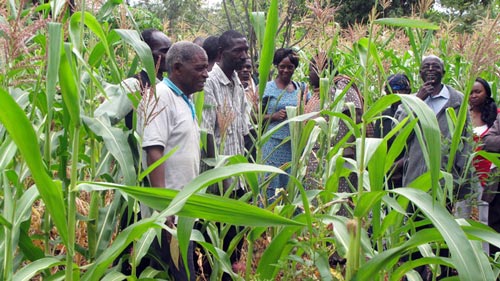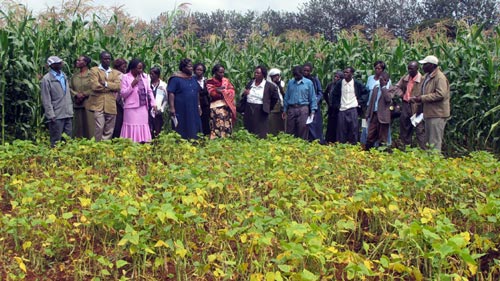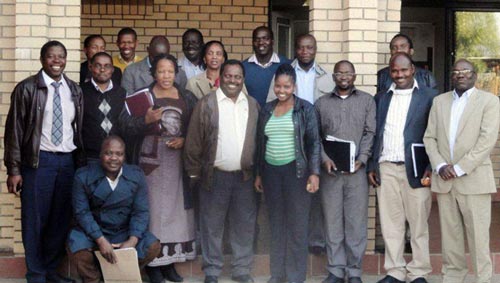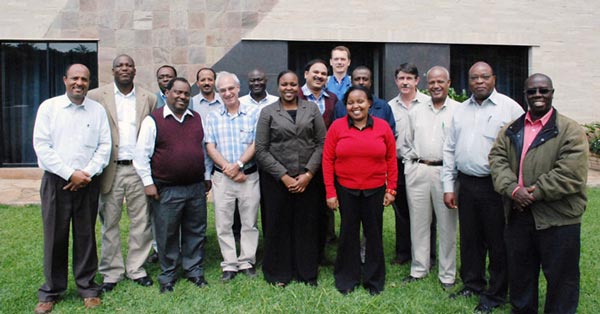Conservation agriculture for smallholder maize farmers in Jharkhand, India
Farming in Jharkhand in eastern India is typically characterized by land degradation, moisture stress, low cropping intensity, poor biomass production, and low farm income. To address these issues faced largely by smallholder farmers, a conservation agriculture (CA) project was initiated in 2011 by CIMMYT in collaboration with Birsa Agricultural University (BAU) and Ranchi and Krishi Vigyan Kendras (KVKs), with support from the International Fund for Agricultural Development (IFAD). A stakeholder consultation/field day was organized on 8 October 2012 jointly by CIMMYT and BAU at Ranchi, Jharkhand, to demonstrate the benefits of CA in sustainable intensification. The event was attended by over 150 participants, including the vice chancellor and other key officers of BAU, CIMMYT scientists, and farmers from three districts of Jharkhand. In addition, representatives from three private companies attended the field day to showcase their latest products and to discuss their support for scalingup seed production of existing commercial and advanced hybrids.
SP Poonia, CIMMYT scientist based at Ranchi, provided an overview of activities and progress of the IFAD “Sustainable Intensification of Smallholder Maize-Livestock Farming Systems in Hill Areas of South Asia” project. Poonia shared salient achievements on sustainable intensification of maize systems using CA-based crop management technologies, and on quality protein maize performance. Raj Gupta from CIMMYT-India stressed that farmers can produce more yield under CA with less supplemental irrigation. He further emphasized that farmers need to consider mechanised farming to ensure timely planting and to realize the full potential of available resources on a sustainable basis.
Ken Sayre from CIMMYT-Mexico appreciated the farmers for efficient adoption of CA within one year since the launch of the project. He then focused on relations between farmers and researchers to enhance knowledge sharing and appreciated the cooperation and vast presence of BAU officials, private sector representatives, and farmers, demonstrating a strong partnership aiming to help the farmers. Sayre also shared his experience with CA-based crop management technologies from Mexico and elsewhere. R.P. Singh Ratan, BAU Extension Director, added that seed companies form a vital link in delivering improved maize varieties to farmers. They are also crucial in training local mechanics and making need-based corrections to CA machineries. He further added that CA techniques are indispensable for conserving natural resources. MP Pandey, Vice Chancellor of BAU and chief guest of the event, appreciated farmers’ feedback on CA-based technologies. He then applauded the CIMMYT and BAU teams for their work both on station and on farmers’ fields in remote areas. He assured his full support for further scaling out of CA-based technologies in the state to achieve more efficient management of natural resources. The event was followed by a field visit and in-field interactions. Officials present at the event included DK Singh ‘Dron’ (ADR, BAU), R Thakur (Chairman of Agronomy), ZA Haider (Chairman of PBG), and other eminent scientists from BAU.
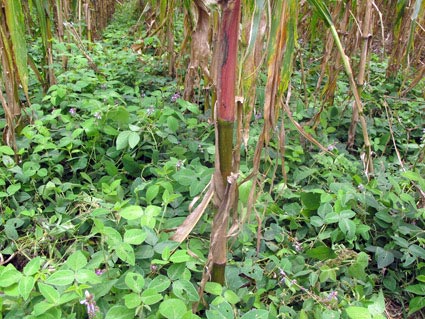 Longer periods of drought and erratic and below-average rainfall in western Kenya have been making farming increasingly difficult over the years. In combination with declining soil fertility and deep-rooted practices of low-farm input application, agricultural productivity in the region has been on steep decline, leaving many farmers desperately staring at famine. However, with introduction of conservation agriculture (CA) via the Sustainable Intensification of Maize-Legume Cropping Systems for Food Security in Eastern and Southern Africa (
Longer periods of drought and erratic and below-average rainfall in western Kenya have been making farming increasingly difficult over the years. In combination with declining soil fertility and deep-rooted practices of low-farm input application, agricultural productivity in the region has been on steep decline, leaving many farmers desperately staring at famine. However, with introduction of conservation agriculture (CA) via the Sustainable Intensification of Maize-Legume Cropping Systems for Food Security in Eastern and Southern Africa (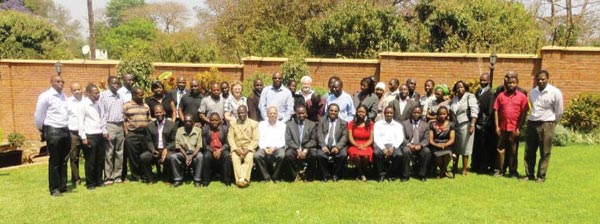

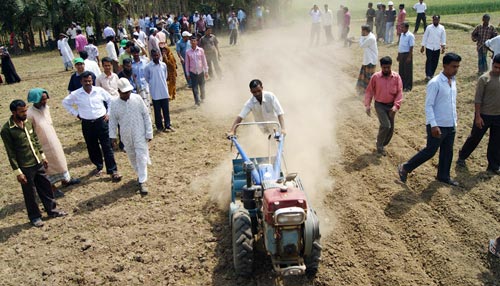 The CIMMYT team in Bangladesh hosted a highprofile field visit on September 1, 2012, for a United States Agency for International Development (
The CIMMYT team in Bangladesh hosted a highprofile field visit on September 1, 2012, for a United States Agency for International Development (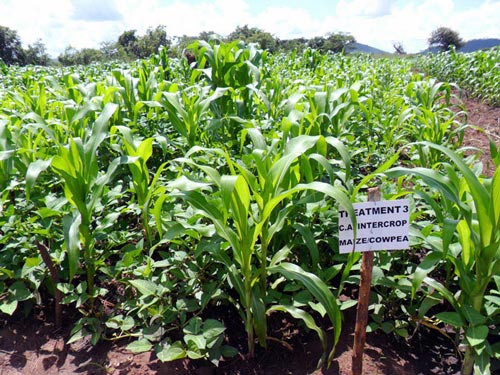 To reduce farm labor, improve soil productivity and crop yields, and contribute towards food security of farming households in the changing climate environment, CIMMYT, the
To reduce farm labor, improve soil productivity and crop yields, and contribute towards food security of farming households in the changing climate environment, CIMMYT, the 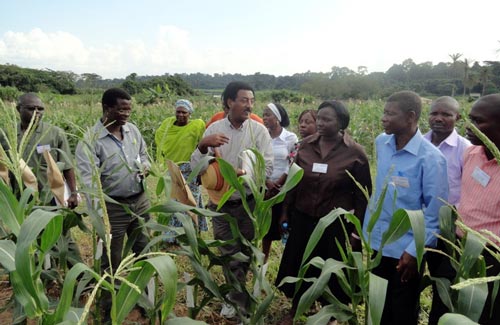 Having experienced CA, both Tembo and Zulu hope that more farmers will adopt the practice. “This project should continue so that others can learn from us that we do things differently now,” she added. Learning about CA has enabled Tembo to lessen the challenges her family faces, especially the tedious labor in preparing the field. Zulu is proud to see that other farmers admire what they see on his farm.
Having experienced CA, both Tembo and Zulu hope that more farmers will adopt the practice. “This project should continue so that others can learn from us that we do things differently now,” she added. Learning about CA has enabled Tembo to lessen the challenges her family faces, especially the tedious labor in preparing the field. Zulu is proud to see that other farmers admire what they see on his farm.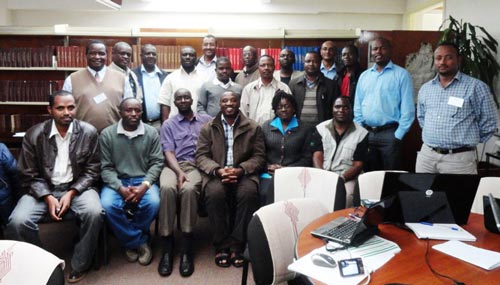 The fourth workshop on monitoring and evaluation (M&E) organized by the
The fourth workshop on monitoring and evaluation (M&E) organized by the 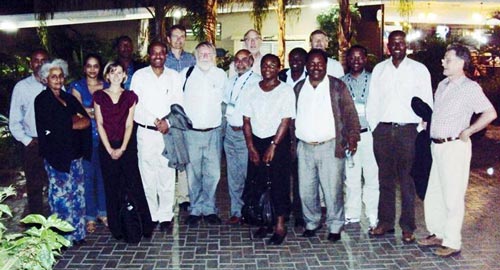 A team of scientists from CIMMYT’s socioeconomics program participated in the 28th triennial International Conference of Agricultural Economists (ICAE) in Foz do Iguaçu, Brazil, during 18-24 August 2012. ICAE, which is considered the key platform for the preservation of international agricultural and development economics research, brought together over 700 researchers and provided an opportunity to share new research ideas, methods, and tools.
A team of scientists from CIMMYT’s socioeconomics program participated in the 28th triennial International Conference of Agricultural Economists (ICAE) in Foz do Iguaçu, Brazil, during 18-24 August 2012. ICAE, which is considered the key platform for the preservation of international agricultural and development economics research, brought together over 700 researchers and provided an opportunity to share new research ideas, methods, and tools.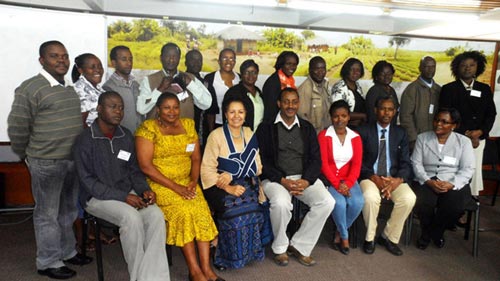
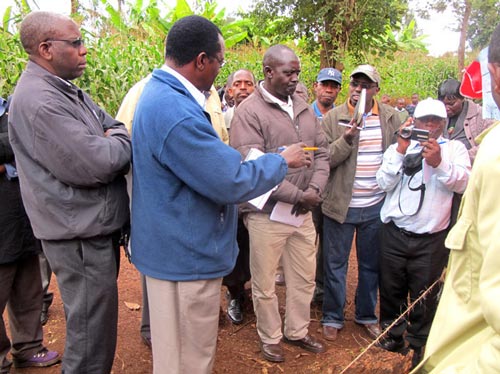 A delegation of scientists from South Sudan, Rwanda, and Uganda —the spillover countries of the Sustainable Intensification of Maize-Legume Systems for Food Security in Eastern and Southern Africa (SIMLESA) initiative— visited Embu, Kenya, during 18-20 July 2012, to gain hands-on experience in implementing the program and to learn about its impact on livelihoods of smallholder farmers.
A delegation of scientists from South Sudan, Rwanda, and Uganda —the spillover countries of the Sustainable Intensification of Maize-Legume Systems for Food Security in Eastern and Southern Africa (SIMLESA) initiative— visited Embu, Kenya, during 18-20 July 2012, to gain hands-on experience in implementing the program and to learn about its impact on livelihoods of smallholder farmers.